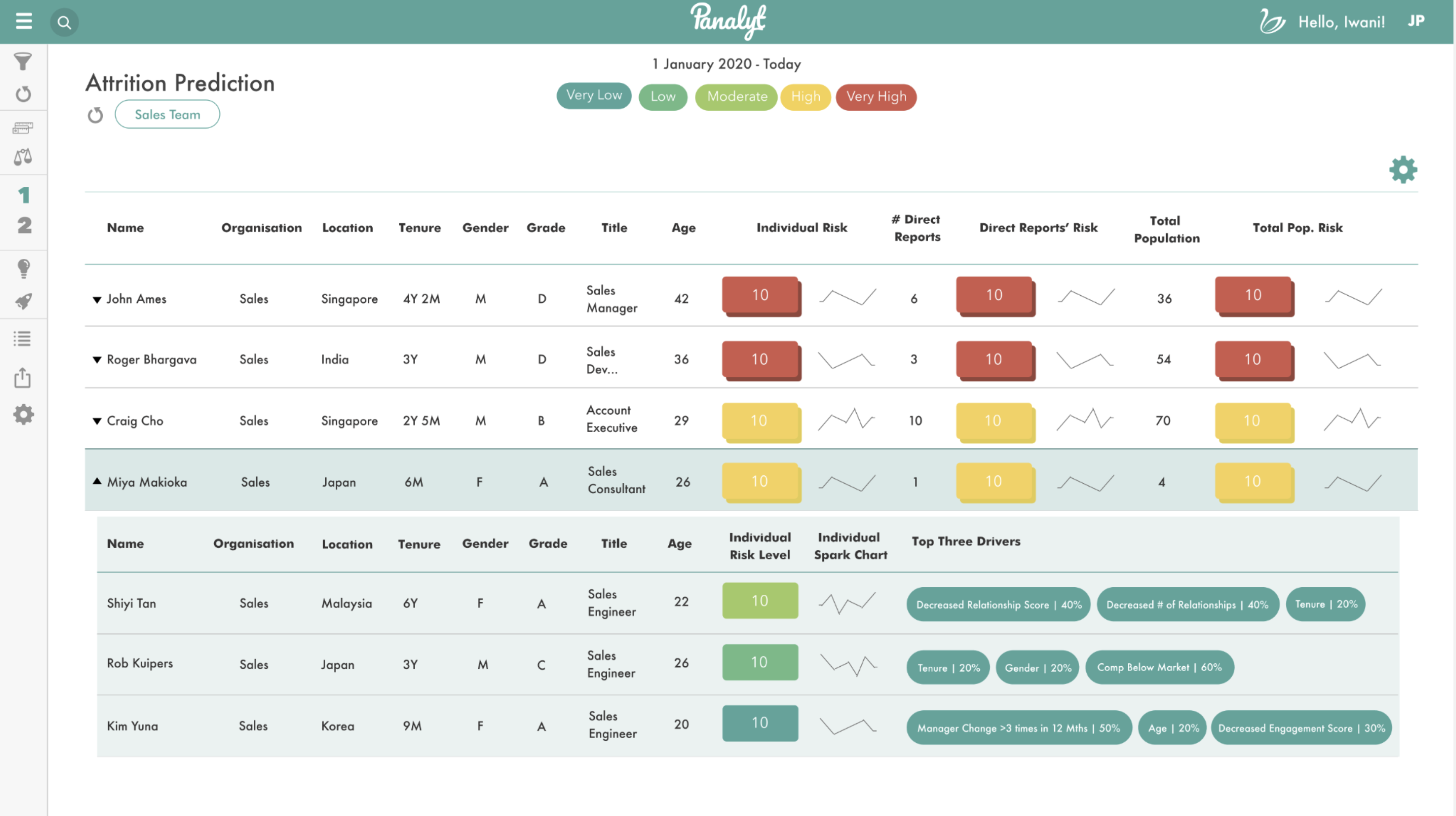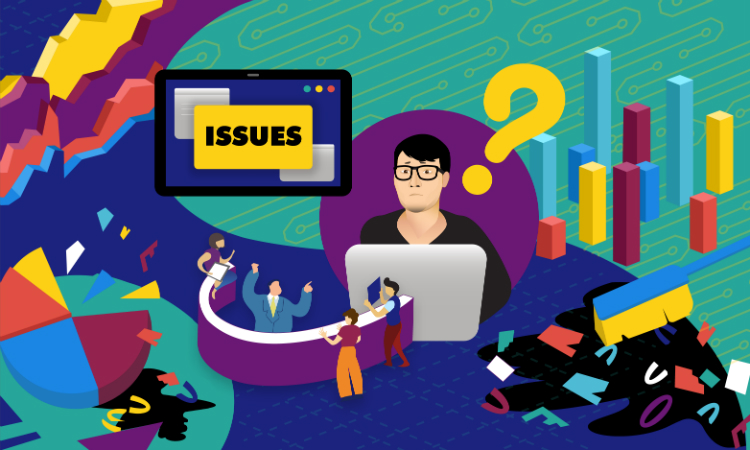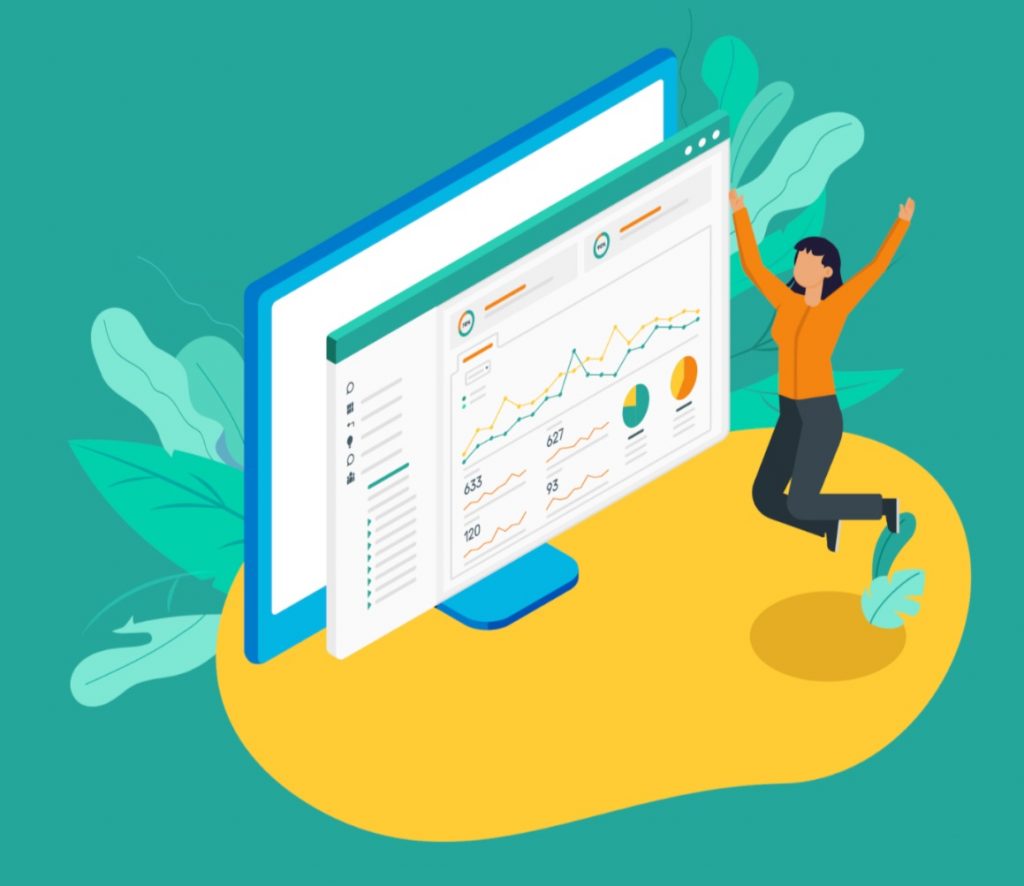Employee Turnover in Asia: How People Analytics Can Help You Turn the Tide

Despite Asia’s huge workforce, there are not enough qualified workers to accommodate the influx of foreign investment. That means that often, Asian companies have to look for talent elsewhere in regions where workers are more experienced in international assignments.
This means that a war for talent has emerged in Asia, increasing the need for international talent with global and digital experience. Asian leaders need to step up to the task and disrupt themselves and their companies to retain and train talent to thrive amid the era of digital disruption.
But despite great leaps in technology and hiring processes, attrition is still a reality for a large number of Asian businesses. In fact, 71% of HR professionals across all industries consider the shortage of talent to be their biggest hiring challenge. That’s a whole lot of people.
Besides, let’s take a look at the numbers:
$12,000 a year per employee is lost to turnover in Asia.
Now, let’s look at this graph.
As you can see voluntary turnover is the big culprit here. If you can reduce it, you’re likely to reduce the associated costs involved with hiring and training new employees and the productivity loss while the new hire gets up to speed. For instance, if we think of Singapore, we would be talking about reducing turnover costs by almost 50%.
The total costs due to attrition for U.S. companies in 2016 were $617 billion. Based on the 77 percent voluntary quit rate, the controllable cost for U.S. companies is $475 billion.
This is why you need to take care of your employees to keep them happy and engaged with your company.
While it’s true that sometimes employees just leave, if you don’t look at the reasons behind each resignation, you might be failing to spot an employee exodus that could derail your efforts.
However, the reasons behind talent turnover are hard to spot at a glance because turnover is that silent killer you don’t know might be stunting your company’s growth.
That’s where people analytics can help you. Analytics help you manage your HR data, helping you spot issues with your workforce before they happen.
Let’s analyze some of the reasons behind talent turnover in Asia, and we’ll show you how people analytics can help you if you believe you’re suffering from a high talent turnover.
Managers are hiring the wrong candidates
Hiring has become tough these days.
This means that often when pressed to make a hiring decision, HR professionals hire a candidate who might not have a future with the company in the long run.
Nowadays, and particularly in Asia, companies must be good at hiring across most levels. In fact, chances are that the candidates they want are already doing the job elsewhere.
However, even when hiring top performance employees, bad culture fit happens and top performers can’t repeat their success in the new workplace. In fact, 80% of employee turnover is due to bad hiring decisions, which means that you have got to be careful with who you choose first so you don’t have to hire again.
How can people analytics help you spot this trend?
One of the most common mistakes companies make is not connecting their recruitment candidate data to the data stored on their HR systems. If you do so, you can track back high performers and highly engaged employees to the recruiters, hiring manager, hire source and other data points collected during the recruitment process and then use this information to inform your hiring decisions.
In the case of attrition, measure the number of employees who are leaving your company before three months or six have passed, which gives you an insight into the efficiency of your recruitment and onboarding processes. Also, you can track all the hiring managers and recruiters involved in the process so you can train them to be better at retaining. Roll over Pareto, 90% of your top hires come from 10% of your hiring managers. By connecting the data, you’ll get a better picture of the reasons behind early tenure turnover.
On the other hand, analytics could also help you understand why talent has stayed with you so you can factor those reasons into your candidate selection criteria.
Limited Career Paths
It’s a fact that employees’ expectations around career progression have changed. That’s another reason behind the high turnover in Asia. Around 38% of the workers are planning to quit their jobs due to a limited career path.
Employees are looking for better career progression opportunities, and since most companies in Asia fill their vacancies with outside employees, chances are you’re not considering your in-house talent.
That being said, it’s worth mentioning that companies could also be losing talent because of their own lack of clear career paths and training initiatives.
With that in mind, opening internal job boards could really help you find the right person inside your organization. Just make sure you make the applicant list a secret so your managers don’t feel tempted to block promotions or interfere with the process. Or you could ideate career paths with clear progression and sets of skills your employees need for success.
How can you see that using people analytics?
Right off the bat, recognize the costs of outside hiring. You can calculate the cost-per-hire of hiring a new employee versus the cost of promoting one from your company. A people analytics tool can quickly pull the metrics and help you calculate the most cost-effective option for your organization.
Track the percentage of openings filled from within. This gives you an insight into the internal mobility practices of your organization, and you might be able to cut down on voluntary attrition by high-potential employees who are not getting the desired growth in their current job roles.
Another way of looking at it would be measuring your hires’ performance and their time-to-productivity.
It’s possible that the time an outside employee spends trying to figure out their position in the company could be put to better use by an in-house candidate, but you don’t know what you don’t measure.
A people analytics tool can also help Organizational Development/ Learning and Development professionals work with employees to chart out their desired career path within the company and design a customized L&D program accordingly.

You could combine analytics with actions to improve your onboarding process once you’ve spotted how much time it takes to an employee to become productive to shorten it.
Faulty communications
Everyone hates silos, but they’re natural. As companies develop different areas of expertise, departments are less likely to work together. The good thing is that you can reduce their impact.
Silos can help, but everyone in the company needs to have at least a certain degree of a relationship if they’re meant to work together. And even if employees think they’re connected, chances are they’re not as much as they think.
You need to measure how well your employees communicate and how effective their communications are.
The process involved usually means informing employees about what data you’re extracting, what data you’re reporting on, and why. Keep in mind that legal regulations in some places might require employee opt-in. Then, you need to connect those sources and create a single source of insights.
Conducting a relational analysis using organizational network data will surely help you reveal your team’s performance and provide you insights into how well connected your employees are so you can identify behavior patterns.
HR and senior management must understand what are the drivers and enable a more connected workforce. This means implementing better training seasons to coach and help disengaged employees stay in the loop and understand the company culture.
How can you use people analytics to spot these issues?
To gather relational data, most people analytics tools survey employees about whom they interact with, but these answers are not often truthful or don’t really tell a lot about the whole company.
Another good idea is to passively collect data, but you should only do this if you have explicit consent from your employees. Otherwise, it might be considered an invasion of privacy. Anyhow, the best way a people analytics tool can identify these trends is by using a dashboard where you can see all you need to identify areas in your organization that are vulnerable to turnover.
Poor work-life balance
It’s not a secret that Asian workers clock more hours than the average. That is, undoubtedly, an issue that needs to be addressed. However, that’s not the only cloud on the horizon when it comes to achieving a healthy balance between work and life.
After-hours often accumulate silently. We reply to emails after hours even when we know we shouldn’t, and we take more work than we can handle. However, sometimes having a conversation with a manager is all people need to set expectations straight.
Especially when poor work-life balance is the second most cited category for employee turnover, and it’s on the rise. Also, a good work-life balance is one of the main reasons employees choose to stay at a company, even if the pay is not as good.
How can people analytics show you that trend?
For instance, if one of your employees is arriving late to their job, that might be a sign of a long commute, which might be a reason for turnover. You can spot the same problems by looking at the absenteeism rate. Employees facing imbalances between their work and their lives might have been skipping work and gone unnoticed.
With a people analytics solution, you can see how much time employees are working outside of your regular business hours, then set goals and track progress in a way that’s attainable during business hours, or even make a case for delegating responsibilities differently across your team to avoid overworking certain team members.

Lastly, you could use HR analytics to compare how much you’re paying vs. the market. Maybe you’re paying less than your competitors and your employees are flocking towards them. An analytics tool could give you live benchmark data on your competitors and even give you insights into the pay disparities between people doing similar jobs.
Key takeaways
It’s clear that Asian managers need to reassess their retention strategies. They must work smarter to optimize the way they work with people and motivate their talent to stay in the company to avoid the expenses and risks of hiring outside talent.
However, there’s no doubt people analytics is the new way to make data-driven decisions that improve companies. We’re in the early days of the analytics revolution, and you need to focus on the effects of measuring your employees’ data has on your bottom line.
However, don’t forget to focus on your employees’ wellbeing as well as on the profits!
Are you ready to kickstart your employee management and get timely insights from the most strategic HR metrics?
Try Panalyt and start seeing beyond the metrics!

About Panalyt
Panalyt bridges the People-Data Gap, enabling real-time, uniform access to relevant people data, reports, and insights for CxOs, HR, and business managers.
People data, including employee interactions and connections, is combined with business data empowering businesses to leapfrog to data-driven decision making, eliminating bias and improving engagement, sales effectiveness, productivity, and, as a result, business performance.
Interested in a further discussion on how People Analytics and Relational Analytics can help you drive an improved employee and business outcomes? Book a 30-minute discovery call with our Panalyt co-founders to learn more!









